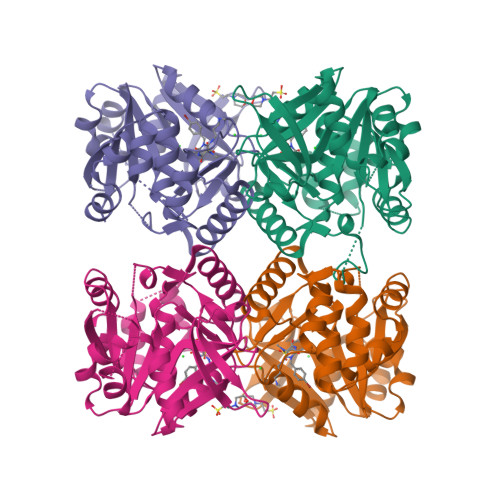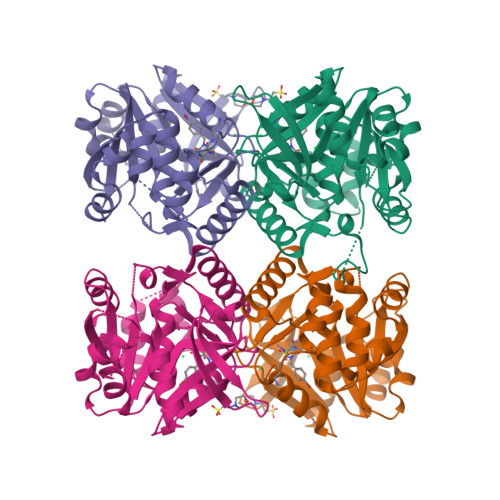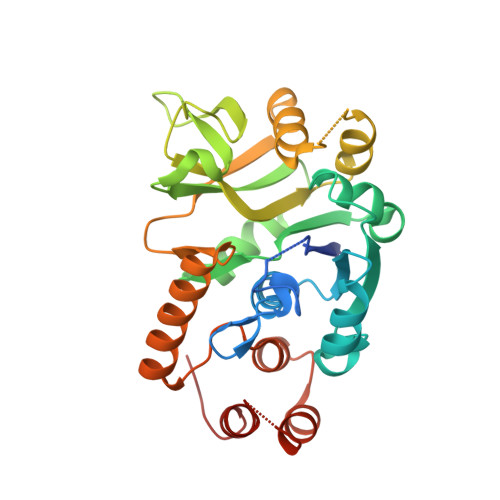Next generation Glucose-1-phosphate thymidylyltransferase (RmlA) inhibitors: An extended SAR study to direct future design.
Xiao, G., Alphey, M.S., Tran, F., Pirrie, L., Milbeo, P., Zhou, Y., Bickel, J.K., Kempf, O., Kempf, K., Naismith, J.H., Westwood, N.J.(2021) Bioorg Med Chem 50: 116477-116477
- PubMed: 34757294
- DOI: https://doi.org/10.1016/j.bmc.2021.116477
- Primary Citation of Related Structures:
6T37, 6T38, 6TQG - PubMed Abstract:
The monosaccharide l-Rhamnose is an important component of bacterial cell walls. The first step in the l-rhamnose biosynthetic pathway is catalysed by glucose-1-phosphate thymidylyltransferase (RmlA), which condenses glucose-1-phosphate (Glu-1-P) with deoxythymidine triphosphate (dTTP) to yield dTDP-d-glucose. In addition to the active site where catalysis of this reaction occurs, RmlA has an allosteric site that is important for its function. Building on previous reports, SAR studies have explored further the allosteric site, leading to the identification of very potent P. aeruginosa RmlA inhibitors. Modification at the C6-NH 2 of the inhibitor's pyrimidinedione core structure was tolerated. X-ray crystallographic analysis of the complexes of P. aeruginosa RmlA with the novel analogues revealed that C6-aminoalkyl substituents can be used to position a modifiable amine just outside the allosteric pocket. This opens up the possibility of linking a siderophore to this class of inhibitor with the goal of enhancing bacterial cell wall permeability.
Organizational Affiliation:
School of Chemistry and Biomedical Sciences Research Complex, University of St Andrews and EaStCHEM, St Andrews Fife KY16 9ST, UK.



















